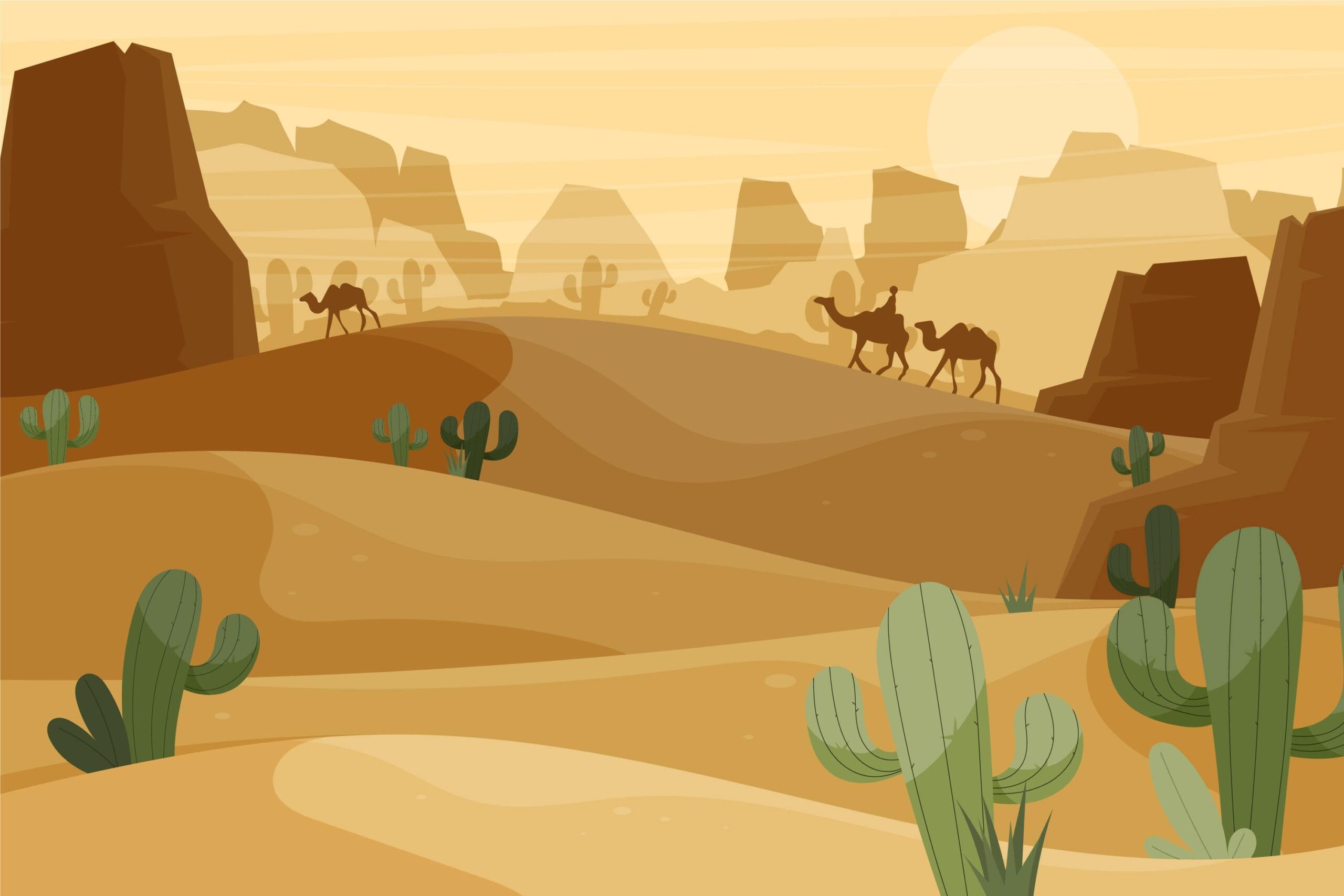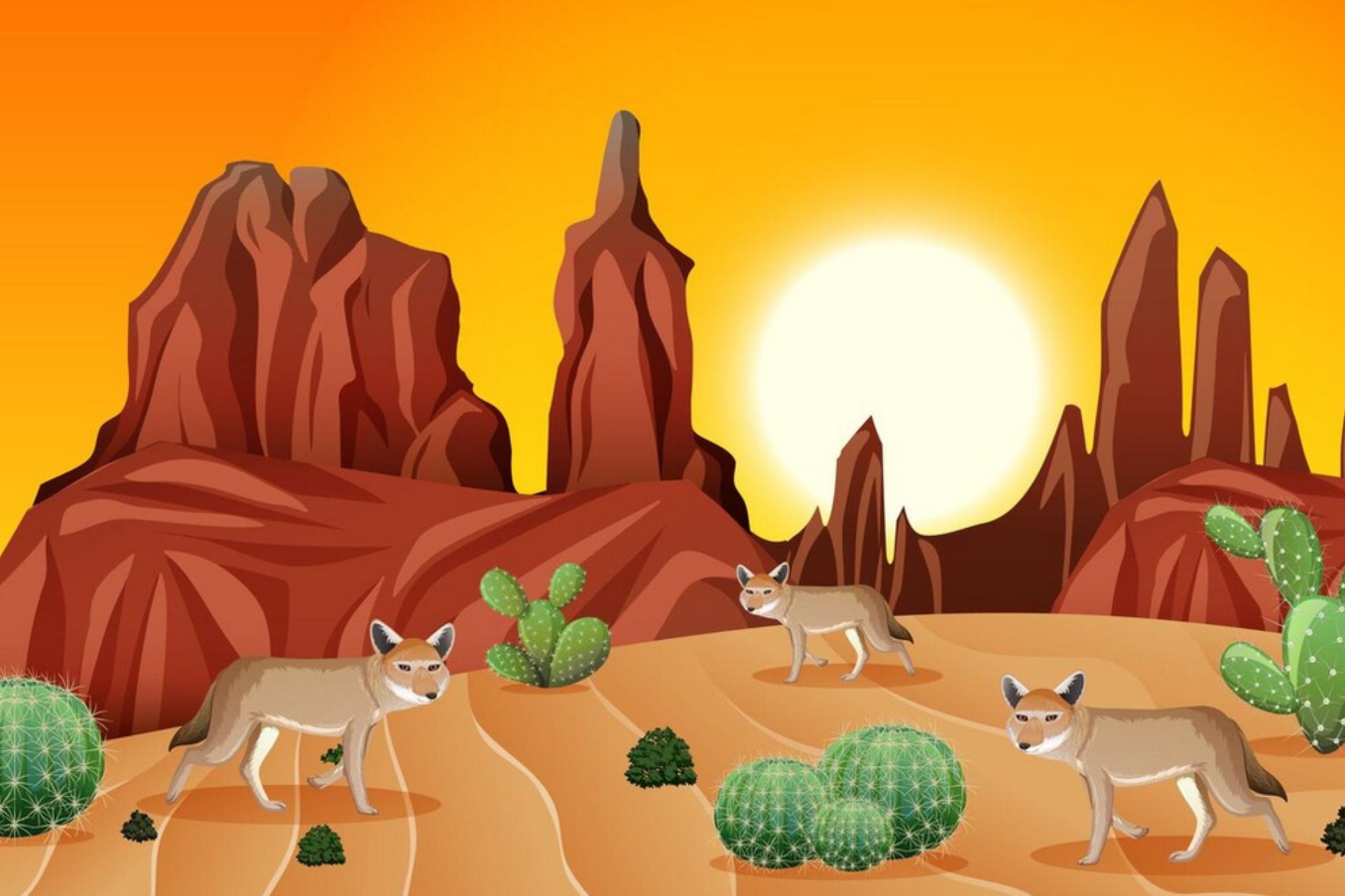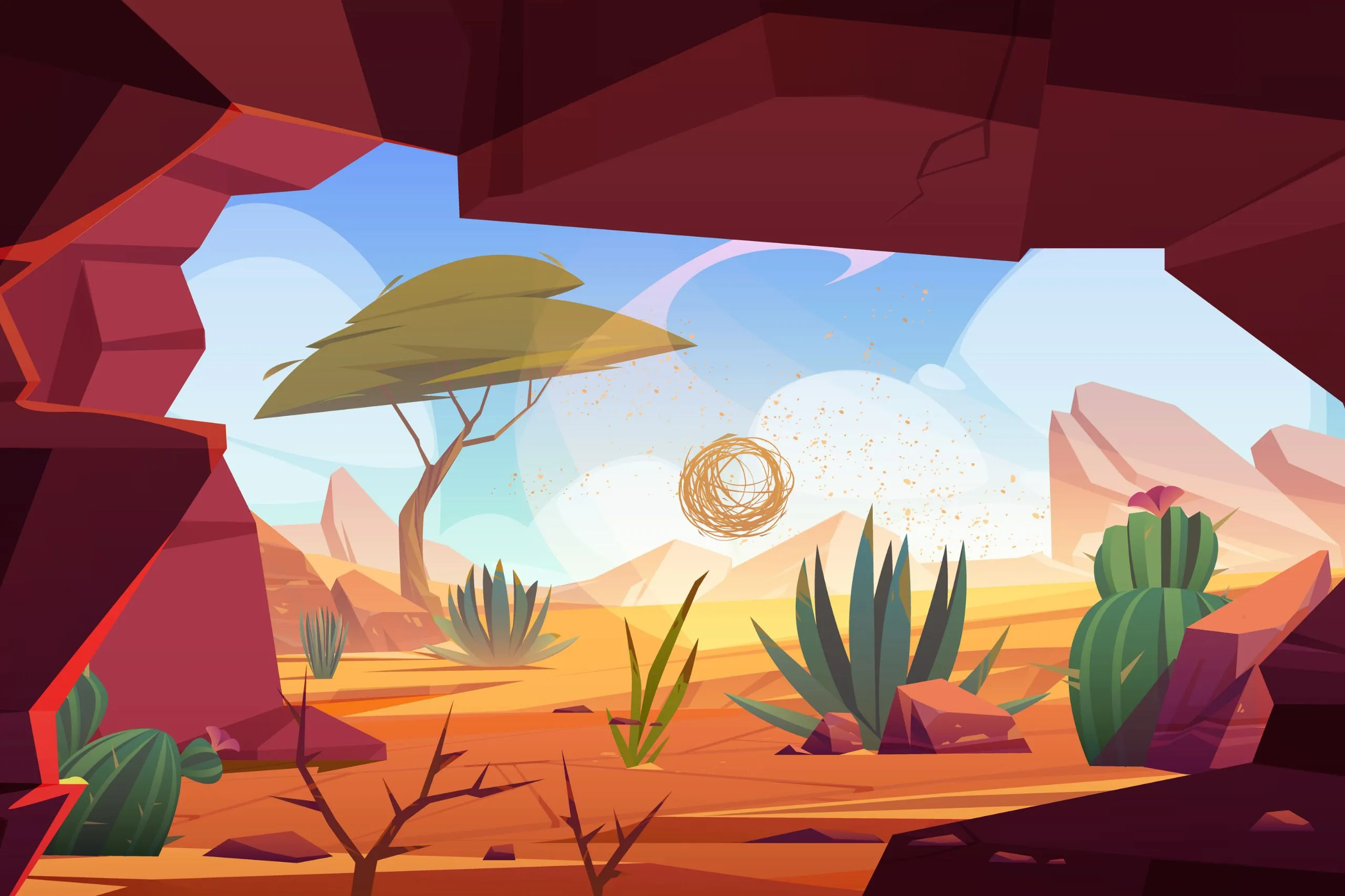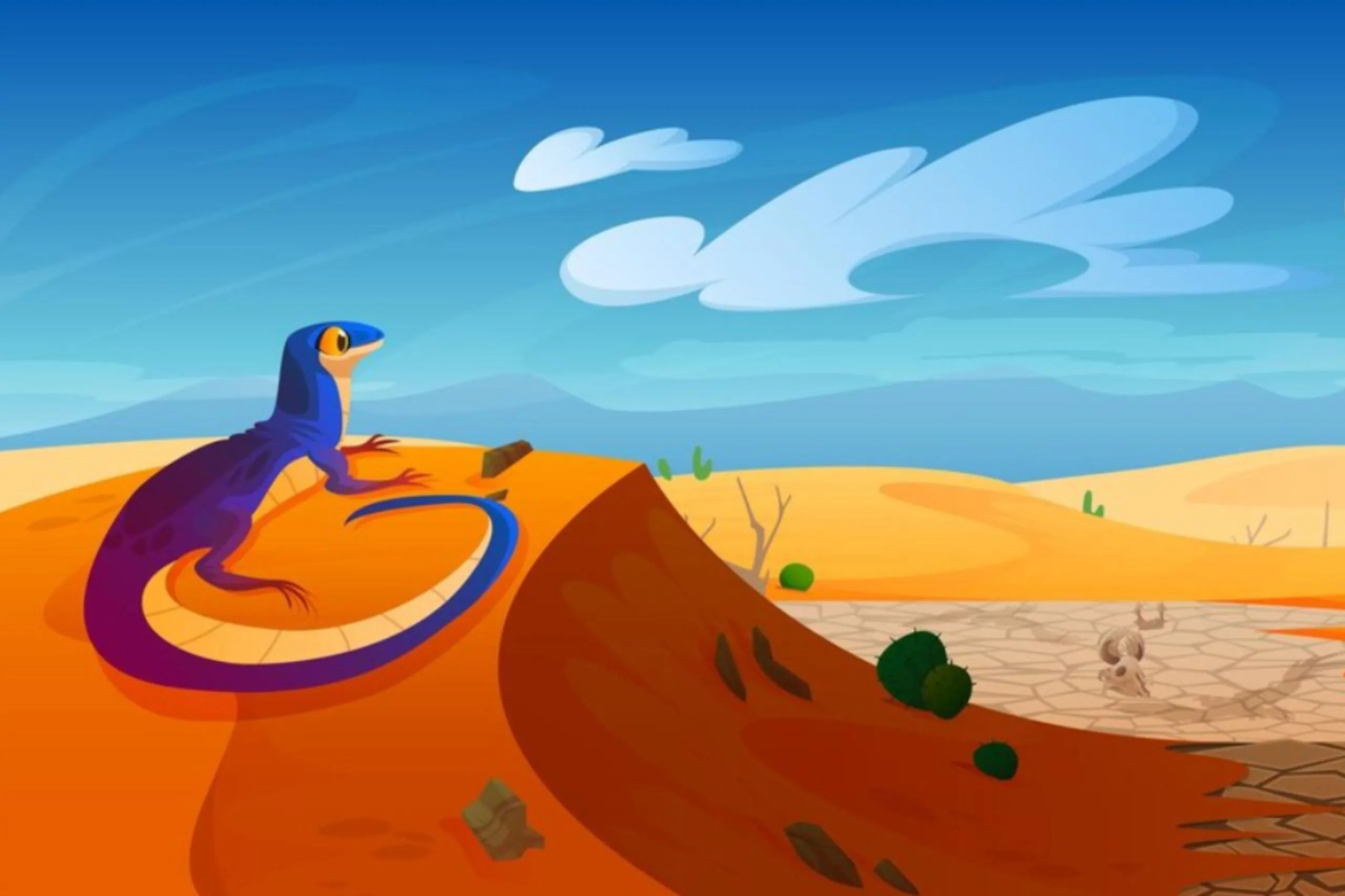Free Homeschool Science Lesson: Abiotic vs. Biotic Factors
Home » Free Homeschool Science Lesson: Abiotic vs. Biotic Factors

Teaching ecosystems just got easier! This interactive lesson helps students distinguish between the living (biotic) and non-living (abiotic) components of environments. Perfect for grades 3-7, this resource reinforces fundamental ecological concepts through engaging narratives and hands-on activities.
Overview: What Are Biotic and Abiotic Factors?
Every environment around us—from lush forests to your own backyard—is made up of two fundamental components: living (biotic) elements and non-living (abiotic) elements. Understanding this distinction helps us appreciate how ecosystems function and how each part plays a crucial role in maintaining balance.
What students will learn:
- The difference between biotic and abiotic factors
- How to identify living and non-living elements in various environments
- The interconnectedness of ecosystem components
- Word origins through prefix exploration (bio-, a-)
This multi-level science resource on biotic and abiotic factors is designed to grow with your student. Here’s how to get the most from it:
Choose Your Level: Select the appropriate content level for your student.
- 🟢 Basic: Simple concepts and vocabulary
- 🟠 Expanded: Core scientific terminology
- 🔵 Advanced: Complex relationships and critical thinking
Living and Nonliving Things
Living and non-living things are all around us! Every place on Earth has both kinds of things that make it special. Let’s learn how to tell them apart.
Let’s go on an adventure through a desert ecosystem to discover both the living and non-living parts of this fascinating environment.
The Desert Adventure
Imagine you’re exploring a desert! The hot sun shines down on you. The sand feels warm and big rocks stand tall nearby. These are all non-living things.

As you walk, you see cactus plants with sharp spines. A lizard scurries by! A very hungry bird sits nearby. These are all living things.

Living things need water to survive. In the desert, animals get water from the food they eat. Plants stretch their roots deep underground to find water.
Both the living and non-living parts of the desert work together to make a home for all the desert creatures!
How Are Living and Nonliving Things Different?
Living things:
- Grow and change: Plants get taller, animals get bigger
- Need food and water: All living things need to eat or drink
- Breathe: Animals breathe air, plants take in air too
- Move: Animals can move around, plants can grow toward sunlight
- Have babies: Living things can make more of themselves
Non-living things:
- Don’t grow on their own: Rocks stay the same size unless broken
- Don’t need food: The sun doesn’t need to eat
- Don’t breathe: Air doesn’t need to breathe
- Don’t move by themselves: Water moves, but only because of wind or gravity
- Don’t have babies: One rock doesn’t make baby rocks
Can You Find the Living Things?

Yes, a coyote is a living thing!
Yes, a coyote is a living thing!
Yes, a coyote is a living thing!
Yes, a cactus is a living thing!
Yes, a cactus is a living thing!
The sun is not a living thing. 🌞
Uh oh, rock is not alive! 😋
Sand is not alive, silly pants! 😊
The Desert Environment
Imagine you’re lost in the desert.
The sun beats down on your head. Burning sand stings your eyes, carried by a dry wind as hot as a blast from a furnace. You climb a nearby boulder to search for signs of civilization. Alas, this is not a very hospitable place. There’s no one around.
The sun, the heat, the humidity, the sand, and the boulder – these are the non-living parts of an environment. There’s no water above ground, but you see plants everywhere. Cacti and bushes and small trees leap from the ground.
You walk for some time before tripping over some old bones. Watch out! You hear a rattle and a hiss and some slithering. There must be a snake hidden nearby. The cacti, the bushes, the trees, the bones, the rattlesnake – these are the living parts of an environment.
Where do organisms find water in a place as utterly dry as this? Snakes get their water from eating smaller animals, such as mice; in turn, mice get their water from eating seeds and vegetation. Where do plants get water? Well, underground, of course!
The desert’s living and non-living factors are closely linked. Hmmm. Maybe an awareness of the living and non-living elements of the desert is the key to survival. But first let’s find some shade and wait for nightfall.

What Are Factors?
Environments are made up of smaller parts. Think about your home. Your home is probably made up of a floor, ceiling, walls, chairs, you, your family, and maybe even a pet. These are similar to the factors of an environment.
Abiotic and Biotic Factors
Abiotic factors are the non-living parts of the environment. The weather, the Sun, the wind, rocks, and even man-made objects are abiotic factors.
Biotic factors, meanwhile, are the living parts of the environment. Elephants, camels, mice, and bacteria are all examples of biotic factors. However, biotic factors aren’t just limited to currently living organisms. Biotic factors also include once living organisms that are now deceased, as well as body parts which have been separated from an organism’s body. Thus, teeth, fingernails, bones, wood, and even fossils are biotic factors.
Let's Sort the Words!
Drag the words into the correct category: Abiotic (non-living) or Biotic (living).
Drag These Words
Abiotic
(Non-living components of environment)
Biotic
(Living components of environment)
Great Job!
You've correctly sorted all the items!
Final Score: 0 | Attempts: 0
Abiotic Factors (Non-living)
Biotic Factors (Living)

Let's Look at Some Prefixes
Did you know? Many scientific terms use Greek and Latin roots. Understanding these building blocks helps decode complex scientific vocabulary across many subjects!
Let’s break down these scientific terms to better understand them.
A-
Means: “not,” “without,” “lacking,” “deficient”
An-
Means: “not,” “without,” “lacking,” “deficient” (goes before vowels)
Bio-
Means: “life”
Scientific Prefixes Matching Game
Match the following prefixes with their correct meanings to learn more about abiotic and biotic factors!
Matched Pairs
Great Job!
You've learned all the scientific prefixes!
Final Score: 0 | Attempts: 0
Review Your Matches:
Great job exploring the components of ecosystems!
Understanding the difference between biotic and abiotic factors helps us appreciate how all parts of an environment work together. This knowledge forms the foundation for more advanced ecological concepts like food webs, energy transfer, and conservation.
What Are Ecosystems?
Ecosystems are complex networks where living organisms interact with their physical environment.
The biotic (living) and abiotic (non-living) factors within an ecosystem form intricate relationships that govern energy flow, nutrient cycling, and population dynamics. Understanding these relationships helps scientists predict how ecosystems respond to changes and disturbances.
The Desert Ecosystem: Abiotic and Biotic Factors
The desert ecosystem presents a fascinating study in adaptation to extreme conditions. During daylight hours, temperatures can fluctuate dramatically, sometimes exceeding 120°F (49°C). This temperature variation—itself an abiotic factor!—creates selection pressure that has led to remarkable features in desert organisms.
Consider the interconnected web of relationships: The sun (abiotic) drives temperature patterns, which influence soil moisture levels and evaporation rates. Desert plants like cacti have specialized structures—reduced leaves, expanded stems for water storage, and extensive shallow root systems—to capture and conserve limited moisture.
These showcases the principle of limiting factors: that abiotic factors (in this case, water availability) can restrict the size or distribution of populations regardless of other favorable conditions. Desert animals exhibit behavioral adaptations, such as nocturnal activity patterns, that allow them to avoid the extreme heat of day.
The decomposition rate in deserts is significantly slower than in humid ecosystems due to limited moisture. This is another example of how abiotic factors influence biological processes. This slower nutrient cycling means desert soils often have lower organic content, which in turn affects the types of plants that can thrive.
Even abiotic factors considered “non-living” have biological origins. Desert sand itself is often partially composed of weathered shells and microscopic organisms from ancient seas, demonstrating the long-term interaction between biotic and abiotic components.

Advanced Concepts to Explore
- Biotic Potential vs. Environmental Resistance: How abiotic factors limit population growth
- Edge Cases: Examining biological entities that challenge simple categorization:
- Viruses (genetic material that requires host cells)
- Prions (infectious proteins without genetic material)
- Dormant seeds (metabolically inactive but potentially living)
- Feedback Loops: How changes in biotic factors can alter abiotic conditions and vice versa
- Biogeochemical Cycles: How biotic and abiotic factors can interact in the carbon, nitrogen, and water cycles
Critical Thinking
- Can human-made objects be considered abiotic factors? Discuss how the introduction of human infrastructure might impact natural ecosystems.
- Analyze how the classification of something as biotic or abiotic might change over time (e.g., how living wood becomes an abiotic log, which then becomes soil through decomposition).
- Compare and contrast how biotic and abiotic factors interact differently in a desert versus a rainforest ecosystem.
Extend the Learning
Great job exploring the components of ecosystems! Understanding the difference between biotic and abiotic factors helps us appreciate how all parts of an environment work together. This knowledge forms the foundation for more advanced ecological concepts like food webs, energy transfer, and conservation.
Want to extend the learning?
- Backyard Exploration: Have your student catalog the biotic and abiotic factors in your yard or local park
- Ecosystem Diorama: Create a model showing the interaction between living and non-living elements
- Research Project: Investigate how abiotic factors like temperature or rainfall affect the biotic factors in a specific environment
Resources
Standards Alignment:
- Next Generation Science Standards: LS2.A – Interdependent Relationships in Ecosystems
- Common Core ELA: Reading for Information, Vocabulary Acquisition
Recommended for:
- Grades 3-5
- Homeschool Science
- Environmental Studies
- Biology Fundamentals
Further Reading:
All images designed by Freepik.
